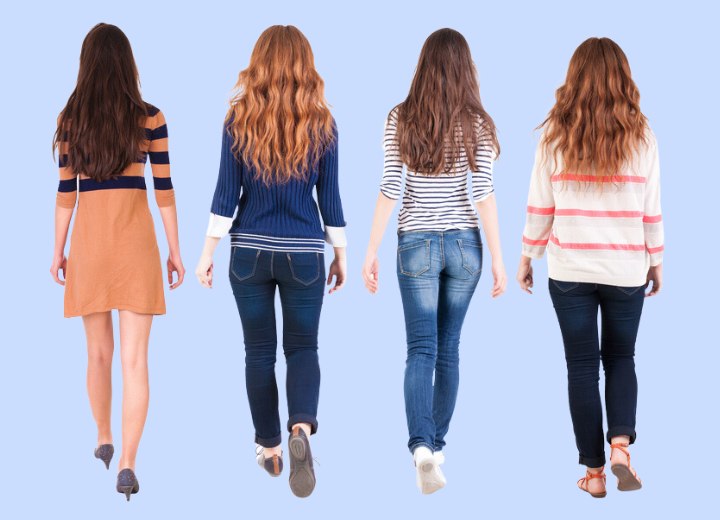Soufrange Haircut

This also helps to thin out thick, curly hair like I have. She says she's been cutting hair for 30 years, and it may be an old term. She said I would not find it on the internet, but I'm still curious. Thanks and please help!
A: I have never heard of the “soufrange” term. I tried doing some research on it, but you’re right; the term or even word doesn’t exist. At least not on the internet or hairdressing archives that I tried. It sounds like she cut your hair in an exaggerated layers technique. This hair cutting technique has become very popular with hairdressers and clients alike, especially in the last few decades.
This means that when the hair is let down again, the hair will fall in perfectly progressive layers from top to bottom, without any harsh lines showing. When the hairdresser draws out the next vertical section to cut, he/she will use the first vertical section as her vertical guide, and again use the bottom length of hair as her/his horizontal guide.
The hairdresser will progressively work his/her way around the circumference of the head, continually using this technique. As each previous vertical section is used as the next section’s guide; the layers should theoretically all look the same, which means that the end-result is a cut where the layers are perfectly progressive and uniform.
In the case where the client has very thick, curly or dense hair as you have, the hairdresser will proceed or thin out or texturize the hair. The amount and technique used will depend on the type of hair, the effect that the hairdresser wants to achieve and the personal preference of the hairdresser.
A technique which works well with this kind of cut is when the hairdresser again begins at the side of the head, drawing out a thin vertical section of hair and combing it at an angle in an upward direction. She/he will then make little snips into the guide line of the hair at a 90-degree angle. This thins out the edge of the hair, as well as texturizing the cut. How deep she/he makes these little snips and how many snips are made into the guide line again depends on the style that he/she wants to create and the type of hair.
Another thinning out technique that works well with this cut is by using a hairdressing razor, and progressively slicing into the guide line with the razor. This haircutting technique is very versatile and can be used to create elegantly progressive layers or exaggerated “rock-star” layers where the hair at the crown is very short, and the bottom horizontal guide line is very long, usually well below the shoulder blades of the client.
©Hairfinder.com
See also: How to layer long hair